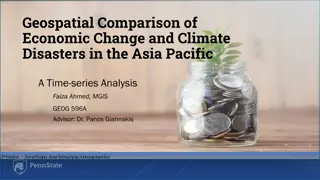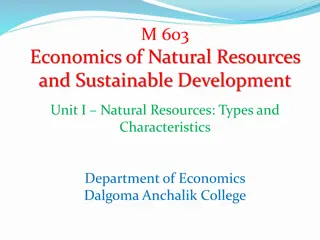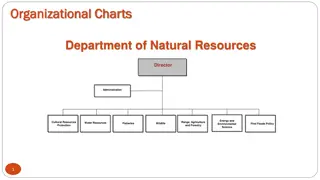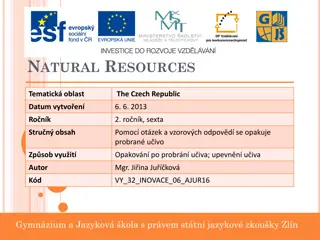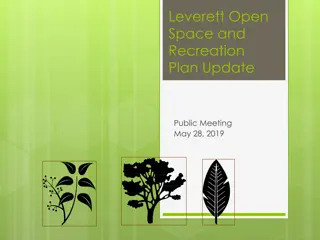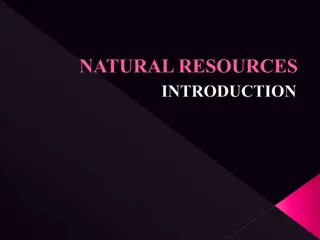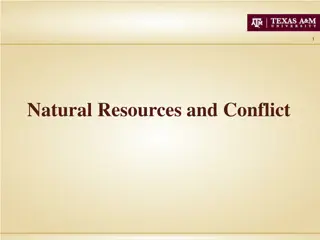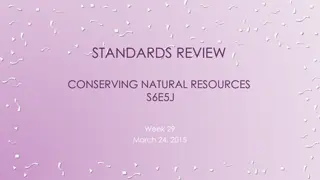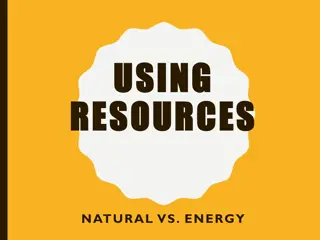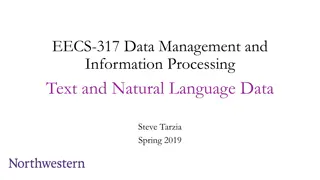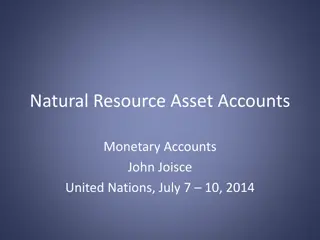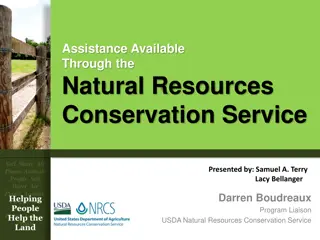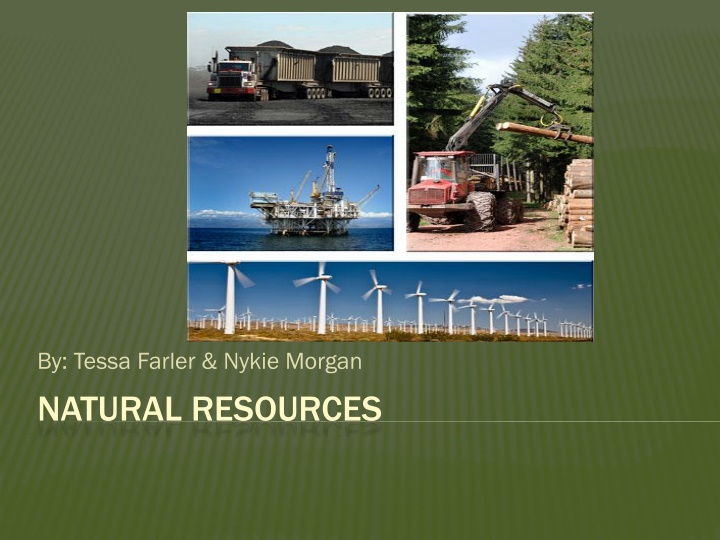
Natural Resources and Their Impact on Energy Generation
Explore the world of natural resources, including the difference between renewable and nonrenewable sources. Learn about the pros and cons of renewable and nonrenewable resources, the significance of conservation efforts, and the role of fossil fuels in energy production.
Download Presentation

Please find below an Image/Link to download the presentation.
The content on the website is provided AS IS for your information and personal use only. It may not be sold, licensed, or shared on other websites without obtaining consent from the author. If you encounter any issues during the download, it is possible that the publisher has removed the file from their server.
You are allowed to download the files provided on this website for personal or commercial use, subject to the condition that they are used lawfully. All files are the property of their respective owners.
The content on the website is provided AS IS for your information and personal use only. It may not be sold, licensed, or shared on other websites without obtaining consent from the author.
E N D
Presentation Transcript
By: Tessa Farler & Nykie Morgan NATURAL RESOURCES
WHAT ARE NATURAL RESOURCES? Natural resources are materials and substances found in nature that are NOT man- made. There are two different kinds of natural resources, nonrenewable and renewable.
WHAT RENEWABLE RESOURCES? Renewable resources are one of the two main kinds of natural resources. They can be put back as nearly as fast as it is used. Renewable resources can never run out, like wind, solar, and water power (also called hydroelectricity).
PROS AND CONS OF RENEWABLE RESOURCES Pros: Renewable resources save money and are greener (better) for the environment. Cons: Installing wind turbines or solar panels are very costly. They are also not as efficient.
FOSSIL FUELS Fossil fuels get their name because they are made from once living organisms. They are nonrenewable resources. Even though they cannot be replaced they makeup a majority of our power.
WHAT ARE NONRENEWABLE RESOURCES? Nonrenewable resources are the second kind of natural resources. They CANNOT be replaced fast enough once they have run out. Despite this fact, most of our electricity and power (60%) is run on nonrenewable resources, such as fossil fuels. Some examples include Petroleum, coal, and uranium.
PROS AND CONS OF NONRENEWABLE RESOURCES Pros: They give higher energy and are easier to use. Cons: They will one day run out, causes pollution and destroys habitats.
CONSERVATION Conservation is the wise use of resources. People try to conserve nonrenewable resources because they will one day run out. If we don t conserve our resources, we will have to switch to wind, water, or solar energy, which are very costly.
QUESTIONS What is one example of a nonrenewable resource? Where does fossil fuels get there names? What are the two different kinds of natural resource? What is one downside to renewable resources? Can you name a conservation organization?
SOURCES En.wikipedia.org/ Google.com Google images Answers.com

